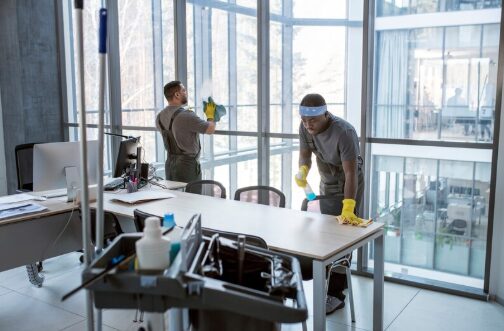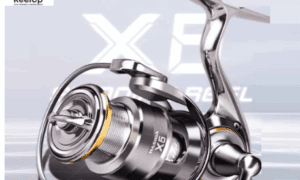The commercial cleaning industry is undergoing a digital transformation, driven by intelligent cleaning technologies that enhance efficiency, reduce costs, and promote sustainability. At Westlink Commercial Cleaning we provide cutting-edge commercial cleaning services across Sydney and Darwin, leveraging these innovations to deliver spotless, eco-friendly results for businesses. From robotic floor scrubbers to IoT-enabled cleaning sensors, these innovations are redefining how businesses maintain clean, healthy environments. This article explores how smart cleaning technologies are revolutionizing commercial cleaning, their benefits, real-world applications, and what the future holds for facility managers and cleaning businesses.
What Are Smart Cleaning Technologies?
Smart cleaning technologies encompass a range of advanced cleaning systems that integrate artificial intelligence (AI), the Internet of Things (IoT), and robotics to streamline cleaning processes. Unlike traditional methods that rely heavily on manual labor, these high-tech cleaning equipment solutions use smart sensors for cleaning, AI algorithms for cleaning, and robotic navigation systems to perform tasks autonomously. These technologies are part of broader smart building ecosystems, enabling data-driven decision-making and real-time monitoring of cleaning performance.
Key components include:
- Autonomous floor cleaners: Robots that navigate large spaces like offices or malls, cleaning floors without human intervention.
- IoT cleaning solutions: Devices that communicate with facility management platforms to optimize cleaning schedules.
- UV sterilization robots: Machines that disinfect surfaces using ultraviolet light, ideal for healthcare facilities.
- Smart cleaning software: Tools that provide cleaning performance analytics to track efficiency and areas needing attention.
The Benefits of Smart Cleaning Technologies
The adoption of automated janitorial services offers transformative benefits for businesses, employees, and the environment. Here’s how:
1. Enhanced Efficiency and Productivity
Robotic cleaning systems and autonomous vacuum cleaners can operate 24/7, covering large areas like warehouse cleaning services in Sydney or airport cleaning services in Sydney with minimal human oversight. For example, a robotic floor scrubber can clean thousands of square feet per hour, reducing labor time and allowing staff to focus on high-value tasks. Data-driven cleaning protocols use IoT connectivity modules to schedule cleaning based on occupancy or soil levels, ensuring resources are used efficiently.
2. Cost Savings Over Time
While the initial investment in smart facility management tools can be significant, the long-term savings are substantial. Eco-efficient cleaning robots reduce water and chemical usage, lowering operational costs. A case study from a Chicago-based office building showed that implementing IoT-enabled cleaning sensors reduced cleaning costs by 20% annually by optimizing staff schedules and supply usage.
3. Improved Health and Safety
UV sterilization robots and electrostatic sprayers eliminate pathogens more effectively than manual methods, creating safer environments in schools, hospitals, and offices. These modern cleaning innovations are critical in high-traffic areas where hygiene is paramount. For instance, smart air purifiers monitor and improve indoor air quality, reducing the spread of airborne viruses.
4. Sustainability and Eco-Friendliness
Green commercial cleaning is a growing trend, and eco-friendly cleaning innovations align with this demand. Smart mopping devices and eco-friendly cleaning agents minimize environmental impact by using less water and biodegradable chemicals. Businesses adopting these solutions can enhance their sustainability credentials, appealing to eco-conscious clients.
Real-World Applications of Smart Cleaning Technologies
To illustrate the impact of technology-enhanced cleaning, consider these examples:
- Airports: Autonomous floor cleaners navigate busy terminals, cleaning floors overnight while IoT cleaning solutions monitor high-traffic areas to prioritize cleaning tasks. Hartsfield-Jackson Atlanta International Airport reported a 30% increase in cleaning efficiency after adopting robotic cleaners.
- Healthcare Facilities: UV sterilization robots disinfect patient rooms, reducing hospital-acquired infections by up to 50%. A California hospital integrated smart cleaning software to track disinfection cycles, ensuring compliance with health regulations.
- Office Buildings: Connected cleaning management systems use data dashboards for cleaning to optimize janitorial schedules, ensuring offices are cleaned during low-occupancy hours, minimizing disruption.
These applications demonstrate how smart cleaning technologies integrate into building management technology, delivering measurable results.
Challenges of Adopting Smart Cleaning Technologies
Despite their benefits, implementing next-generation cleaning tools comes with challenges:
- High Initial Costs: The initial investment in robotic cleaning systems or IoT infrastructure for buildings can be a barrier for small businesses. However, Cleaning-as-a-Service models, where companies lease equipment, are emerging as cost-effective solutions.
- Training Requirements: Staff need training to operate smart cleaning software and maintain autonomous cleaning motors. This requires investment in training and skill development to ensure seamless integration.
- Cybersecurity Risks: IoT-enabled cleaning sensors are vulnerable to data breaches, necessitating robust cybersecurity measures to protect sensitive facility data.
To overcome these, businesses can partner with technology providers offering training and support or adopt phased implementation to manage costs.
How to Implement Smart Cleaning Technologies in Your Business
For facility managers or cleaning business owners, adopting digital cleaning solutions requires a strategic approach:
- Conduct a Needs Assessment: Identify areas where automated cleaning devices can add value, such as high-traffic zones or specialized cleaning needs (e.g., carpet cleaning or post-construction cleaning).
- Choose the Right Technology: Select hyponyms like robotic floor scrubbers or smart air purifiers based on your facility’s size and requirements.
- Optimize for Local SEO: If you’re a cleaning business, use keywords like “smart commercial cleaning in [city]” or “eco-friendly office cleaning near me” on your website to attract local clients. Tools like Google Keyword Planner can help identify high-impact terms.
- Train Your Team: Invest in training to ensure staff can operate smart cleaning equipment and interpret cleaning performance analytics.
- Monitor and Optimize: Use data dashboards for cleaning to track performance and make incremental improvements, aligning with Google’s emphasis on user-centric content.
The Future of Smart Cleaning Technologies
The future of automation in cleaning is bright, with emerging trends shaping the industry:
- AI-Driven Cleaning Drones: These could clean hard-to-reach areas like high ceilings or building exteriors.
- Machine-to-Machine Learning: Smart cleaning software will enable devices to learn from each other, optimizing cleaning routes in real time.
- Smart City Cleaning Initiatives: Cities may integrate IoT cleaning solutions into public spaces, creating cleaner urban environments.
As digital transformation in cleaning accelerates, businesses that adopt these technologies will gain a competitive edge, delivering cleaner, safer, and more sustainable spaces.
Why Smart Cleaning Technologies Matter for Your Business
Investing in intelligent cleaning technologies positions your business as a leader in commercial cleaning innovations. By improving efficiency, reducing costs, and enhancing sustainability, these solutions meet the demands of modern clients. Whether you’re a facility manager seeking to optimize operations or a cleaning business aiming to attract more clients, smart cleaning technologies are the key to staying ahead in a competitive industry.

































